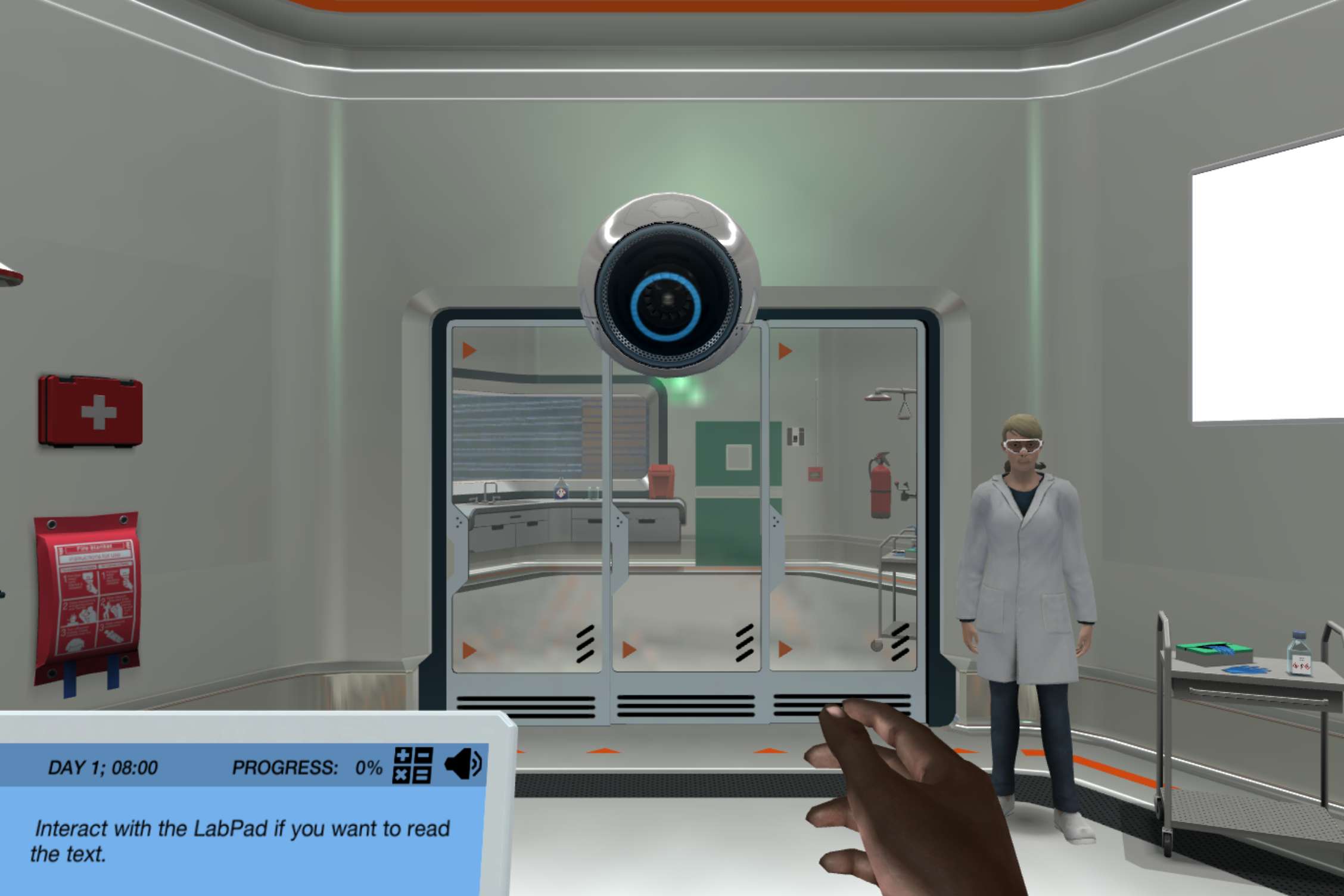Heading 1
Heading 2
Heading 3
Heading 4
Heading 5
Heading 6
Lorem ipsum dolor sit amet, consectetur adipiscing elit, sed do eiusmod tempor incididunt ut labore et dolore magna aliqua. Ut enim ad minim veniam, quis nostrud exercitation ullamco laboris nisi ut aliquip ex ea commodo consequat. Duis aute irure dolor in reprehenderit in voluptate velit esse cillum dolore eu fugiat nulla pariatur.
Block quote
Ordered list
- Item 1
- Item 2
- Item 3
Unordered list
- Item A
- Item B
- Item C
Bold text
Emphasis
Superscript
Subscript
About This Simulation
Join the lab assistant Marie in clearing up the fume hood after some students left a mess in the lab. Learn how to use your knowledge of the chemicals required for an experiment and apply it to safely dispose of the chemical waste.
Learning Objectives
- Identify different waste containers in a lab and know their uses
- Choose between organic and aqueous solvents for cleaning
- Dispose of chemical waste safely using knowledge of hazards
About This Simulation
Lab Techniques
- Spillages/stains management
- Use of waste containers
- Use of organic and aqueous solvents
Related Standards
- Lab safety support
- Generic lab safety support
- Supports The Laboratory Safety Institute’s Laboratory Safety Guidelines
Learn More About This Simulation
This short, targeted simulation is adapted from the full-length “Chemistry Safety” simulation.
Are explosions possible if we don’t dispose of chemical waste the right way? The answer is yes. In this simulation, you will learn how to apply your knowledge of the chemicals used in a laboratory experiment to make a decision on the correct waste bins to use, without mixing chemicals that can cause harmful and unexpected reactions!
Analyze the lab workstation
You will learn the skill of assessing the fume hood in order to decide the best way to dispose of the waste, and clean up the workstation. Choose between solvents and waste containers and learn about the consequences of choosing the wrong one. Yes you guessed it, potential side reactions!
Safe laboratory practice
This is why a virtual simulation is so amazing; the cutting-edge technology will allow you to learn without putting you at risk! It is always good practice to implement the safety regulations and correct handling of hazardous chemicals no matter where you are! If you know now and are constantly reminded, you will have all of the knowledge you need to protect yourself and others in the lab by analyzing the risks with the chemicals that are required. Yes you are in a virtual lab but personal protective equipment is a must!
Review your knowledge
Answer quiz questions that challenge the choices you make when it comes to cleaning up the laboratory. Gain relevant knowledge with relevant theory pages about hazards and safety data sheets. Be presented with a scenario where you will be able to informatively decide which one would yield the biggest consequence in terms of waste disposal.
Boost STEM Pass Rates
Boost Learning with Fun
75% of students show high engagement and improved grades with Labster
Discover Simulations That Match Your Syllabus
Easily bolster your learning objectives with relevant, interactive content
Place Students in the Shoes of Real Scientists
Practice a lab procedure or visualize theory through narrative-driven scenarios


For Science Programs Providing a Learning Advantage
FAQs
Find answers to frequently asked questions.
Heading 1
Heading 2
Heading 3
Heading 4
Heading 5
Heading 6
Lorem ipsum dolor sit amet, consectetur adipiscing elit, sed do eiusmod tempor incididunt ut labore et dolore magna aliqua. Ut enim ad minim veniam, quis nostrud exercitation ullamco laboris nisi ut aliquip ex ea commodo consequat. Duis aute irure dolor in reprehenderit in voluptate velit esse cillum dolore eu fugiat nulla pariatur.
Block quote
Ordered list
- Item 1
- Item 2
- Item 3
Unordered list
- Item A
- Item B
- Item C
Bold text
Emphasis
Superscript
Subscript
Labster can be integrated within a school's LMS (Learning Management System), and students can access it like any other assignment in their LMS. If your Institution does not choose an LMS integration, students will log in to Labster's Course Manager once they have an account created. Your institution will decide the access method during the sales process.
Labster is available for purchase by instructors, faculty, and administrators at education institutions. Purchasing our starter package, Labster Explorer, can be done using a credit card if you are located in the USA, Canada, or Mexico. If you are outside of North America or are choosing a higher plan, please speak with a Labster sales representative. Compare plans.
Labster simulations are created by real scientists and designed with unparalleled interactivity. Unlike point and click competitors, Labster simulations immerse students and encourage mastery through active learning.
Labster supports a wide range of courses at the high school and university level across fields in biology, chemistry and physics. Some simulations mimic lab procedures with high fidelity to train foundational skills, while others are meant to bring theory to life through interactive scenarios.










.png?fm=jpg&w=450&h=400)
.png?fm=jpg&w=450&h=400)
.png?fm=jpg&w=450&h=400)





